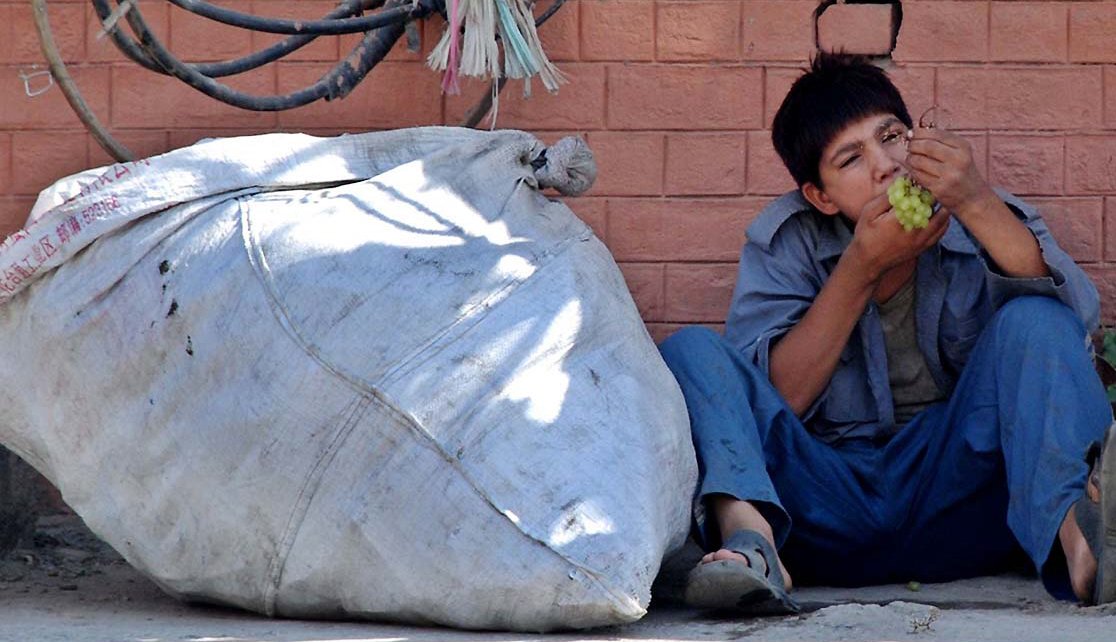
However, it blocked the release of province based data of poverty reduction due to steep decline in poverty in Khyber Pakhtunkhwa.
Pakistan Muslim Leauge-Nawaz (PML-N) led federal government published the poverty statistics for the fiscal year 2015-16 in the Economic Survey of Pakistan 2017-18, which was launched by Advisor to Prime Minister on Finance Dr Miftah Ismail.
The survey showed that 10.8 million people were lifted out of extreme poverty in 2015-16. Moreover, four out of every ten Pakistanis are officially considered poor as against three out of every ten Pakistanis who were considered poor four years ago.
In absolute terms, 50.4 million are now being recognised as poor against the previous figure of 60.2 million.
The percentage of people living below poverty line has declined from 29.5% in 2013-14 to 24.3% in 2015-16, according to the survey. There was a decline of 5.2% in the poverty within two years. Over the last decade, Pakistan’s poverty headcount has witnessed a persistent decline both at national and regional levels, it added.
Data controversy: Numbers show a decline in poverty
Poverty in both rural and urban areas has also been on the declining trend with the poverty headcount of 12.5% in urban areas and 30.7% in rural areas in 2015-16. The decline in poverty is more pronounced in urban areas than rural areas.
The declining trends are shared at national as well as urban and rural areas. While comparing with 2011-12, the largest percentage decline in poverty headcount was observed in year 2013-14 when national poverty headcount declined by 6.8 percentage points with 6.2 percentage points decline in Urban and 7.5 percentage points in rural areas.
Moreover, the poverty headcount declined by 5.7 percentage points in urban areas and 4.9 percentage points in rural areas between 2014 and 2016, thereby leading to an overall decline of 5.2 percentage points decline in incidence of national poverty headcount.
However, the government did not release the provincial breakup of the poverty headcount due to steep reduction in poverty in K-P, which is governed by Imran Khan’s Pakistan Tahreek-e-Insaf (PTI), said sources in the Planning Ministry.
Why poverty hasn’t reduced significantly in Pakistan
The reduction in K-P almost doubled to over 10% as compared to 5.2% reduction in poverty at national level. The poverty decreased less than 4% in Punjab, which is ruled by PML-N as compared to the reduction in K-P.
The main reason behind steep reduction in poverty in K-P was restoration of peace, which restored livelihood opportunities for the people. The federal government and the international donor community also pumped in billions of rupees in the province after the launch of Operation Zarb-e-Azb to rebuild the destroyed infrastructure.
The poverty also modestly decreased in Sindh and Balochistan.
The targeted poverty reduction programmes like Benazir Income Support Programme, relative political stability and peace and tranquility led to reduction in poverty at national level, according to the Economic Survey of Pakistan.
The strong recovery of economic growth rate, continued higher inflows of remittances especially from Middle East, which are destined to relatively poor families, said the report. Moreover, inclusive characteristics of economic growth are some of the important causes that can be attributed to a significant decline in the poverty headcount since 2005-06, according to the survey report.
The decline in poverty incidence is phenomenal in Pakistan since 2007-08 and normal inter survey decline is around seven percentage point with only exception in 2010-11. The inter survey decline in poverty headcount was insignificant in 2011-12 as compared to 2010-11 survey, according to the report.
There can be two possible undertones for this low performance. Firstly, the inter-survey period may not sufficient to observe meaningful decline in poverty both at national and regional levels. Secondly, two catastrophic floods of 2010-11 hit a significant blow to rural populace whose income and livelihoods were severely affected by these floods, according to the Survey.
Overall, despite the floods of 2010 and chronic energy shortages, aggravated security situation and government’s limited capacity to mobilize and channelize its own resources exclusively for social welfare and poverty eradication programmes, the declining trend in poverty headcount in Pakistan is both promising and encouraging.

1732437695-0/drake-and-charles-(1)1732437695-0-165x106.webp)


1732434981-0/BeFunky-collage-(10)1732434981-0-165x106.webp)



1732433856-0/Untitled-design-(6)1732433856-0-270x192.webp)
1732429143-0/BeFunk_§_]__-(44)1732429143-0.jpg)
1732428532-0/BeFunk_§_]__-(43)1732428532-0.jpg)






COMMENTS (1)
Comments are moderated and generally will be posted if they are on-topic and not abusive.
For more information, please see our Comments FAQ